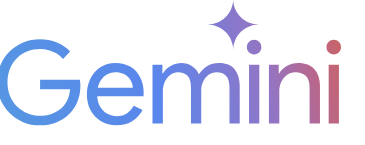Unlocking the Power of GPT-4: A Comprehensive Guide for Developers
In the ever-evolving world of artificial intelligence, few technologies have made as significant an impact as OpenAI’s Generative Pre-trained Transformer 4, or GPT-4. Being at the forefront of natural language processing (NLP) capabilities, GPT-4 offers unprecedented opportunities for developers and businesses alike to create more engaging, intelligent applications. This guide will delve into the functionalities, applications, and best practices for leveraging the GPT-4 API effectively.
What is GPT-4?
GPT-4 is a state-of-the-art language model that has been trained on a diverse range of internet text. Unlike its predecessors, it showcases improved coherence, understanding, and versatility in generating human-like text. The architecture of GPT-4 allows it to interpret context more accurately, which significantly enhances its application across various domains.
Key Features of GPT-4
- Enhanced Language Understanding: GPT-4 surpasses earlier models with better context retention and nuanced understanding of language, making it suitable for complex task automation.
- Multi-modal Input: Unlike earlier versions, GPT-4 can process both text and images, providing diverse capabilities for applications.
- Fine-tuning Capabilities: The model can be fine-tuned for specific tasks, ensuring higher accuracy and better performance in specialized applications.
- Extended Use Cases: From chatbots to translation services, the implementation possibilities for GPT-4 are vast and varied.
Getting Started with GPT-4 API
To start using the GPT-4 API, developers first need to register and acquire the necessary access keys from OpenAI. This involves creating an account on the OpenAI platform and agreeing to their terms of service. After obtaining access, developers can easily make API calls from their applications.
Example API Call
import openai
openai.api_key = "YOUR_API_KEY"
response = openai.ChatCompletion.create(
model="gpt-4",
messages=[
{"role": "user", "content": "Can you explain the key features of GPT-4?"}
]
)
print(response['choices'][0]['message']['content'])
This simple script initializes the OpenAI library, authenticates using the provided API key, and sends a message to the model. The response can be processed to fit various application needs.
Applications of GPT-4
The potential applications of GPT-4 are numerous, ranging from enhancing user experience in customer service to automating complex content generation tasks. Here are some prominent use cases:
1. Chatbots and Virtual Assistants
By integrating GPT-4 into chatbots, businesses can provide a more conversational experience for users. The model can understand and respond to natural language queries more effectively, offering timely information and assistance.
2. Content Creation
Content creators can leverage GPT-4 to help write articles, generate ideas, and even produce entire drafts for blogs or other platforms. This can significantly reduce the time spent on initial drafts and inspire new angles on topics.
3. Language Translation
With its powerful language processing capabilities, GPT-4 can aid in translating text more accurately and contextually than traditional translation tools, adapting to regional nuances and colloquialisms.
4. Educational Tools
Developers can utilize GPT-4 to create educational software that offers personalized learning experiences. The model can address specific student queries and provide explanations tailored to their level of understanding.
Best Practices for Using GPT-4
While GPT-4 is a powerful tool, using it effectively requires an understanding of its limitations and capabilities. Here are best practices to consider:
1. Be Mindful of Prompt Design
The output quality heavily depends on how prompts are designed. Developers should experiment with different phrasing and contextual cues to get the desired responses. The specificity of the prompt often correlates with the quality of the response.
2. Implement Human Oversight
For applications that produce public-facing content, incorporating human review is crucial. While GPT-4 generates insightful content, it may produce errors or inappropriate responses, necessitating final checks before dissemination.
3. Monitor Usage and Feedback
Regularly monitor how users interact with the AI outputs and gather feedback. Implementing a system for users to report inconsistencies or concerns can help in refining the model’s performance over time.
Challenges and Limitations
As impressive as GPT-4 is, it comes with challenges:
1. Ethical Considerations
The potential for misuse, such as generating misleading information or harmful content, poses ethical challenges. Developers should establish ethical guidelines and usage policies to mitigate such risks.
2. Cost of Implementation
Utilizing GPT-4 can incur costs, especially as usage scales. Businesses must assess their budget and the return on investment (ROI) that AI integration promises.
3. Dependency on Data Quality
The model’s effectiveness largely depends on the data it has been trained on. Biases found in training data can reflect in outputs, requiring ongoing efforts to ensure fairness and accuracy.
Future Prospects of GPT-4 and Beyond
As the AI field continues to advance, GPT-4 represents just a snapshot of what’s possible. Researchers at OpenAI and elsewhere are constantly exploring ways to improve model safety, understanding, and deployment. The incorporation of user feedback and real-world performance data will likely shape future iterations, moving towards even more capable and robust systems.
For developers and businesses willing to embrace the capabilities of GPT-4 now, the future holds many possibilities. From building tools that enhance lives to creating applications that streamline business processes, the impact of GPT-4 could potentially redefine standards across industries.
Resources for Developers
To fully harness the power of GPT-4, developers should make use of the following resources:
- OpenAI API Documentation – Essential for understanding how to interact with the API.
- OpenAI Community Forum – A great platform to connect with other developers and share insights.
- Towards Data Science – An informative blog with articles on AI, data science, and machine learning techniques.
By continuously learning and adapting, developers can ensure their applications leverage GPT-4’s advanced capabilities to provide users with remarkable experiences.
















